Ben Kravitz
DiffESM: Conditional Emulation of Temperature and Precipitation in Earth System Models with 3D Diffusion Models
Sep 17, 2024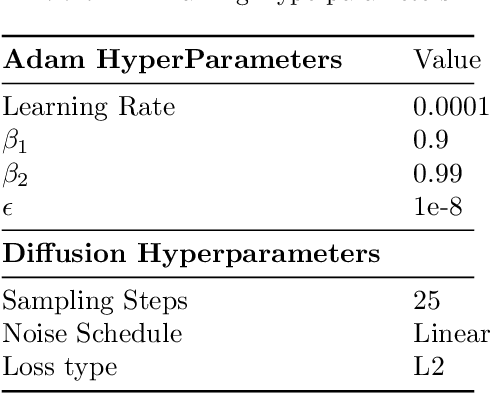
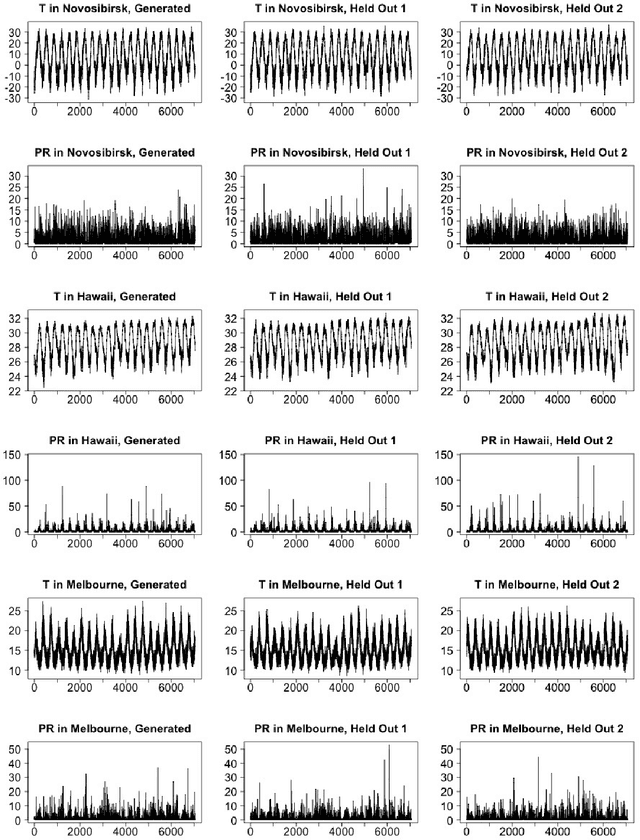
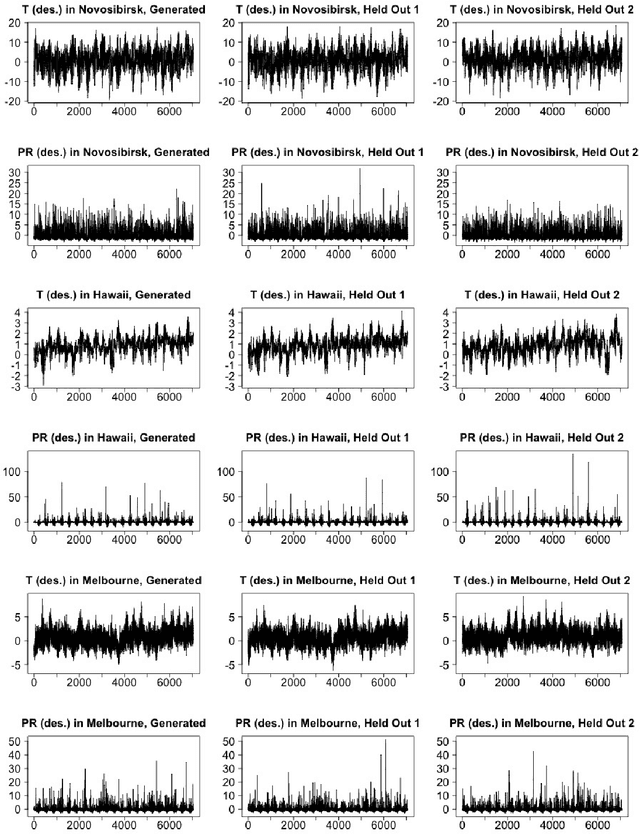
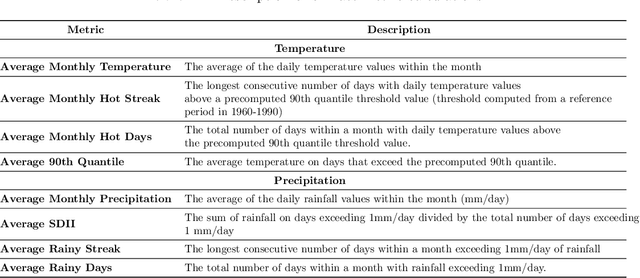
Abstract:Earth System Models (ESMs) are essential for understanding the interaction between human activities and the Earth's climate. However, the computational demands of ESMs often limit the number of simulations that can be run, hindering the robust analysis of risks associated with extreme weather events. While low-cost climate emulators have emerged as an alternative to emulate ESMs and enable rapid analysis of future climate, many of these emulators only provide output on at most a monthly frequency. This temporal resolution is insufficient for analyzing events that require daily characterization, such as heat waves or heavy precipitation. We propose using diffusion models, a class of generative deep learning models, to effectively downscale ESM output from a monthly to a daily frequency. Trained on a handful of ESM realizations, reflecting a wide range of radiative forcings, our DiffESM model takes monthly mean precipitation or temperature as input, and is capable of producing daily values with statistical characteristics close to ESM output. Combined with a low-cost emulator providing monthly means, this approach requires only a small fraction of the computational resources needed to run a large ensemble. We evaluate model behavior using a number of extreme metrics, showing that DiffESM closely matches the spatio-temporal behavior of the ESM output it emulates in terms of the frequency and spatial characteristics of phenomena such as heat waves, dry spells, or rainfall intensity.
DiffESM: Conditional Emulation of Earth System Models with Diffusion Models
Apr 23, 2023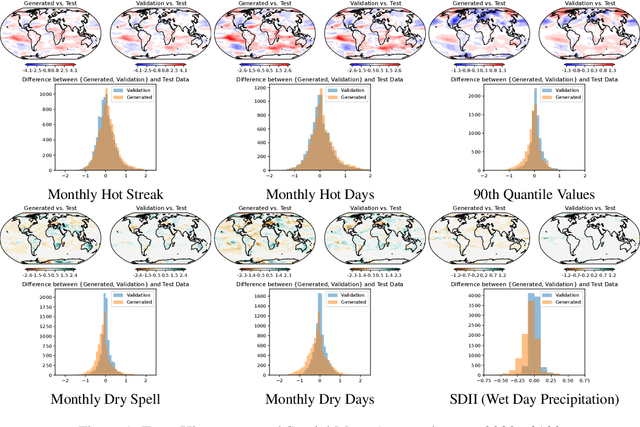
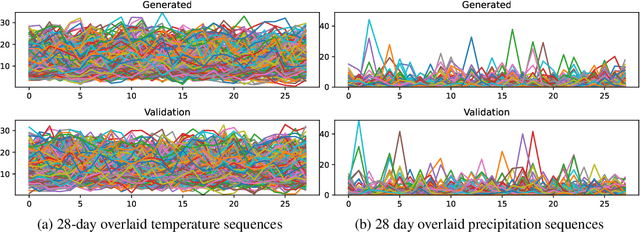
Abstract:Earth System Models (ESMs) are essential tools for understanding the impact of human actions on Earth's climate. One key application of these models is studying extreme weather events, such as heat waves or dry spells, which have significant socioeconomic and environmental consequences. However, the computational demands of running a sufficient number of simulations to analyze the risks are often prohibitive. In this paper we demonstrate that diffusion models -- a class of generative deep learning models -- can effectively emulate the spatio-temporal trends of ESMs under previously unseen climate scenarios, while only requiring a small fraction of the computational resources. We present a diffusion model that is conditioned on monthly averages of temperature or precipitation on a $96 \times 96$ global grid, and produces daily values that are both realistic and consistent with those averages. Our results show that the output from our diffusion model closely matches the spatio-temporal behavior of the ESM it emulates in terms of the frequency of phenomena such as heat waves, dry spells, or rainfall intensity.
Loosely Conditioned Emulation of Global Climate Models With Generative Adversarial Networks
Apr 29, 2021
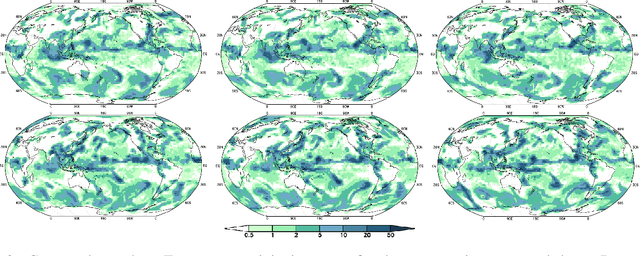


Abstract:Climate models encapsulate our best understanding of the Earth system, allowing research to be conducted on its future under alternative assumptions of how human-driven climate forces are going to evolve. An important application of climate models is to provide metrics of mean and extreme climate changes, particularly under these alternative future scenarios, as these quantities drive the impacts of climate on society and natural systems. Because of the need to explore a wide range of alternative scenarios and other sources of uncertainties in a computationally efficient manner, climate models can only take us so far, as they require significant computational resources, especially when attempting to characterize extreme events, which are rare and thus demand long and numerous simulations in order to accurately represent their changing statistics. Here we use deep learning in a proof of concept that lays the foundation for emulating global climate model output for different scenarios. We train two "loosely conditioned" Generative Adversarial Networks (GANs) that emulate daily precipitation output from a fully coupled Earth system model: one GAN modeling Fall-Winter behavior and the other Spring-Summer. Our GANs are trained to produce spatiotemporal samples: 32 days of precipitation over a 64x128 regular grid discretizing the globe. We evaluate the generator with a set of related performance metrics based upon KL divergence, and find the generated samples to be nearly as well matched to the test data as the validation data is to test. We also find the generated samples to accurately estimate the mean number of dry days and mean longest dry spell in the 32 day samples. Our trained GANs can rapidly generate numerous realizations at a vastly reduced computational expense, compared to large ensembles of climate models, which greatly aids in estimating the statistics of extreme events.
DeepClimGAN: A High-Resolution Climate Data Generator
Nov 23, 2020


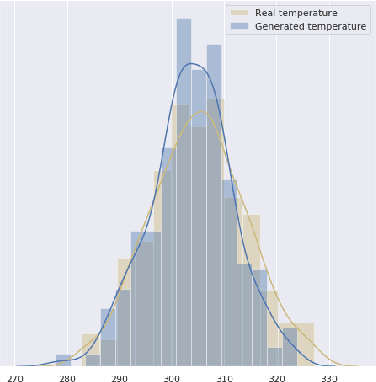
Abstract:Earth system models (ESMs), which simulate the physics and chemistry of the global atmosphere, land, and ocean, are often used to generate future projections of climate change scenarios. These models are far too computationally intensive to run repeatedly, but limited sets of runs are insufficient for some important applications, like adequately sampling distribution tails to characterize extreme events. As a compromise, emulators are substantially less expensive but may not have all of the complexity of an ESM. Here we demonstrate the use of a conditional generative adversarial network (GAN) to act as an ESM emulator. In doing so, we gain the ability to produce daily weather data that is consistent with what ESM might output over any chosen scenario. In particular, the GAN is aimed at representing a joint probability distribution over space, time, and climate variables, enabling the study of correlated extreme events, such as floods, droughts, or heatwaves.
 Add to Chrome
Add to Chrome Add to Firefox
Add to Firefox Add to Edge
Add to Edge